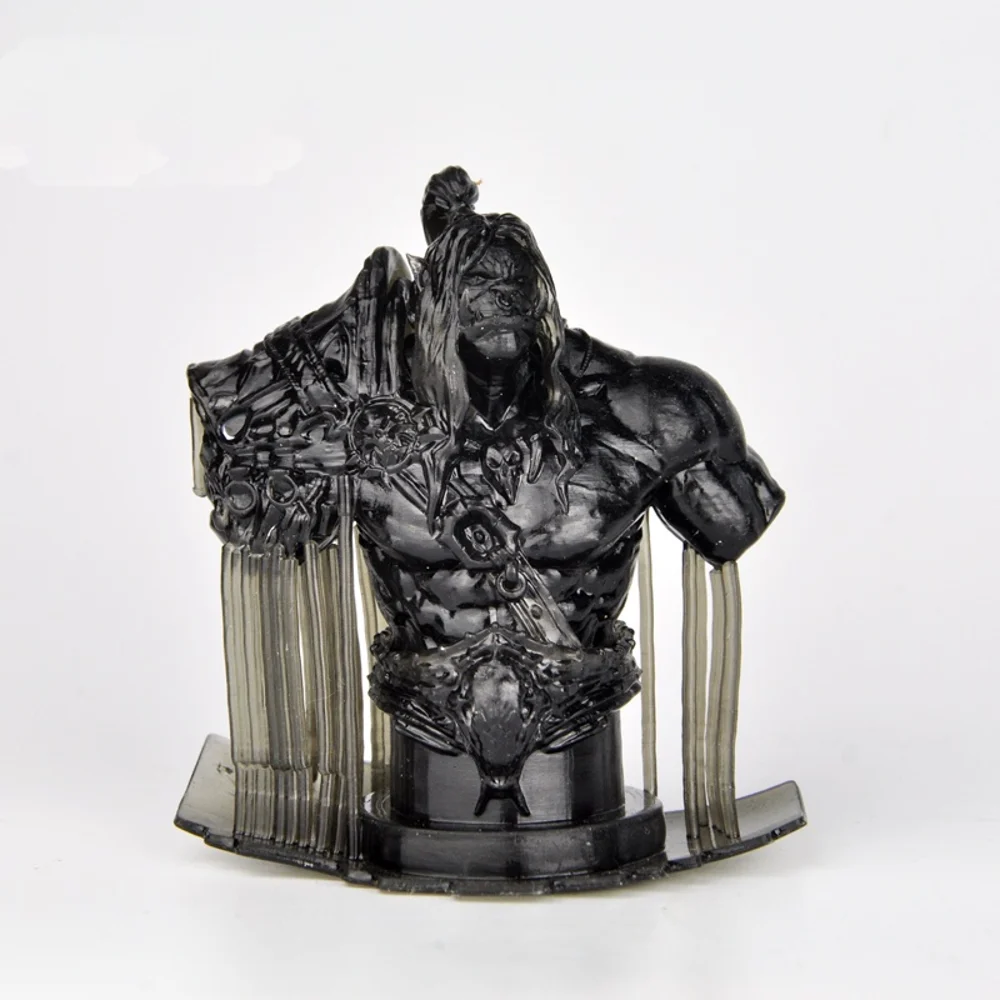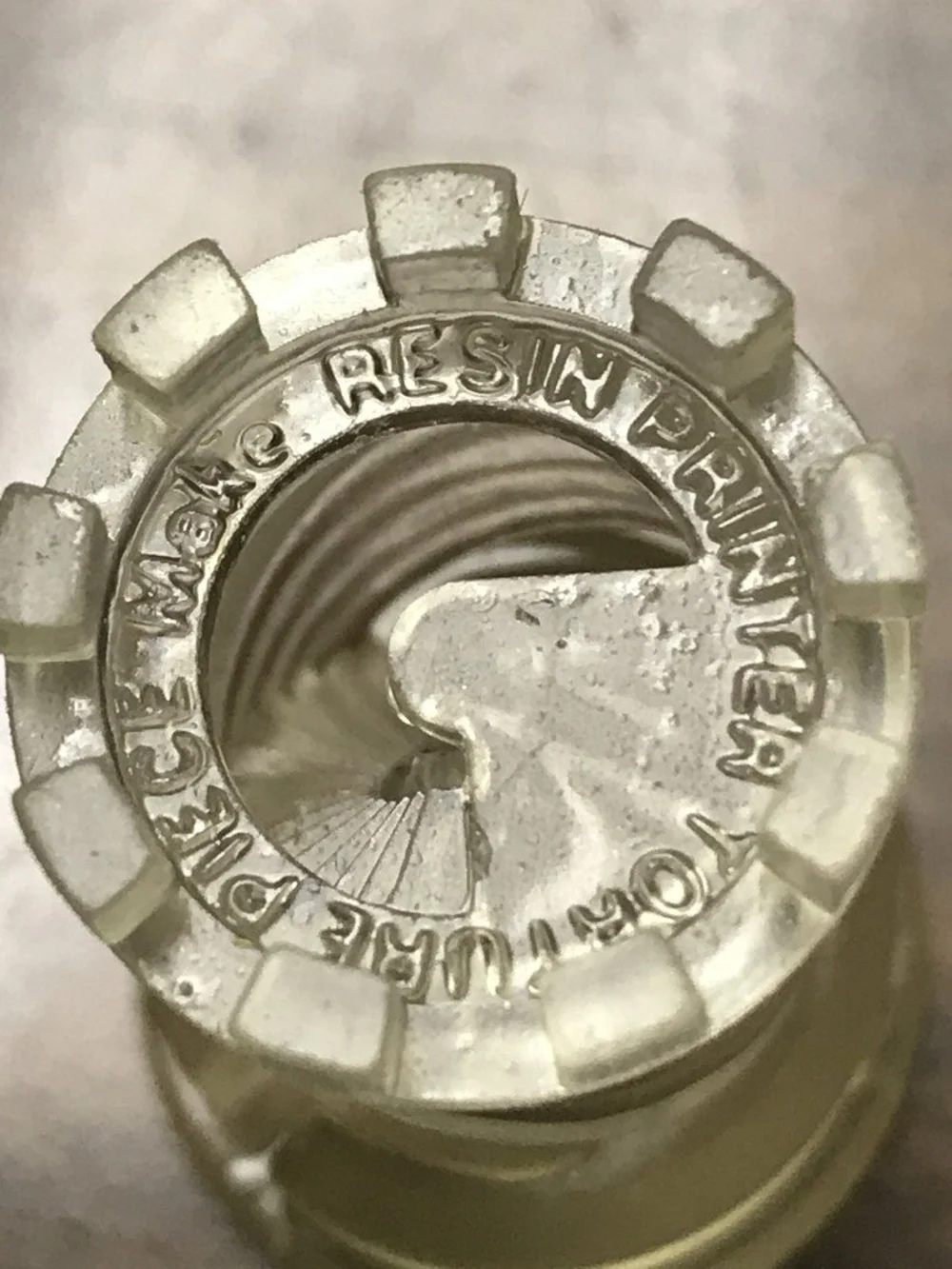A DLP 3D printer under $500? That’s cheap! Review the specs of the Wanhao Duplicator 7 (aka Wanhao D7) and very similar to the Monoprice Mini SLA.
Since its release in early 2017, the Wanhao Duplicator 7 (a.k.a. “Wanhao D7”) caused quite a stir in the DLP 3D printer market. Getting a working DLP printer for under $500 was sensational then. Since then, the printer sold hundreds of units worldwide.
Compared to FDM 3D printers, resin-driven DLP machines are capable of printing smaller objects with the most intricate details – so other manufacturers have jumped on the bandwagon. Still, the Wanhao Duplicator 7 is one of the most affordable DLP machines available on the market and has just currently got some competition from the Anycubic Photon.
Review the Specs
The specifications of the Wanhao D7 3D Printer look similar to most DLP 3D printers.
- Technology: DLP (Digital Light Processing)
- Build Volume: 120 x 68 x 180mm
- Layer Resolution: 35 microns
- Connectivity: USB
- Printable materials:
- Input rating: 110V/220V AC
- Working Voltage: 12V DC
The printer comes assembled, you just have to mount the build plate and add the resin. You can use open-source software (i.e. NanoDLP), so you don’t need to buy anything besides the occasional resin tank replacement and the resins themselves. For convenience, most users recommend buying a Raspberry Pi 3 to free up your computer from 3D printing duties.
Before we break down the special features of the printer, let’s dive into its different versions.
Differences between the D7 And the D7 Plus

There are two different versions of the Wanhao Duplicator 7 on the market.
First, Wanhao updated the original 3D printer to version 1.5 in December 2017. The changes are minor and can be considered more to be internal revisions of the machine to make it more reliable.
Secondly, there’s the “Wanhao Duplicator 7 Plus”. In addition to the D7’s current specs, the new Plus version points out four changes:
- Wanhao upped the Duplicator 7 Plus’ XY accuracy to self-proclaimed 0.0001 mm. The original Wanhao D7’s resolution is 0.05 mm. This reflects in the price, which is currently at $650 instead of $500.
- A revised touchscreen was added to the Wanhao Duplicator 7 Plus.
- The Duplicator 7 Plus is able to 3D print up to 30 mm per hour and features a triple cooling fan to avoid overheating.
- Despite keeping the same dimensions, the machine weighs less.
All in all, the Duplicator 7 Plus aims at the market of jewelers and dentists, whereas the Duplicator 7 is more a semiprofessional hobbyist machine.
What is Special?

First of all, the Wanhao Duplicator 7 3D printer is a DLP machine. This technology differs from the more common FDM 3D printing.
Instead of melting plastic filament in a heated nozzle, DLP and SLA printers use liquid resins that are cured by light. The resins are stored in a tank. The build plate dips into this tank to build the desired object. But whereas SLA 3D printers (i.e. Formlabs Form 2) use a laser beam to harden the liquid resin, DLP printers use a technology called Digital Light Processing. The project a whole image of a layer (like a beamer would) that cures the resin. Once the resin is hardened, the build plate moves up and the projector then displays the next slice of the object.
The benefit of a DLP printer is that it can print highly detailed objects. As you can imagine, the screen resolution is the important part of any DLP 3D printer. The Anycubic Photon offers 1440 x 2560 resolution, which is considered good.
Please be advised resin-based 3D printers are not suitable for beginners. And even in the field of SLA / DLP printers, the D7 3D printer isn’t considered a plug-and-play machine, even by its dearest fans. Post-processing involves washing the prints with ethanol, curing them, cleaning the build plate – it’s a messy process. Also, the smell is not pleasant.
Available Resins

Wanhao provides a range of resins for the Duplicator 7. A bottle will set you back $40 roughly.
Of course, you’re not stuck with the resins provided by the manufacturer. If you want to buy additional resins, make sure they are working with an active wavelength of 405 nanometers.
There’s an exhaustive list at 3D printer wiki, collected by D7 users. They found out that you also can use some UV-curable resins that go down to a wavelength of 380 nanometers. This gives you access to castable wax resins, extra strong materials, and even industrial-grade materials.
Known Issues
No printer is perfect, and the D7 is no exception. Here are some drawbacks the Wanhao D7 3D printing community ran into:
- The LCD screen sometimes shows a flickering image or nothing at all. It is known to be one of the weak points.
- If you find your prints leaning towards a side, you should check the Z-axis – if it’s not properly calibrated, you’ll get z-axis wobble.
- The fans are known to be too weak and should be replaced with stronger ones if you plan to print a lot.
- The build volume of the Wanhao Duplicator 7 is relatively small (120 mm x 68 mm x 180 mm).
Where to Buy
